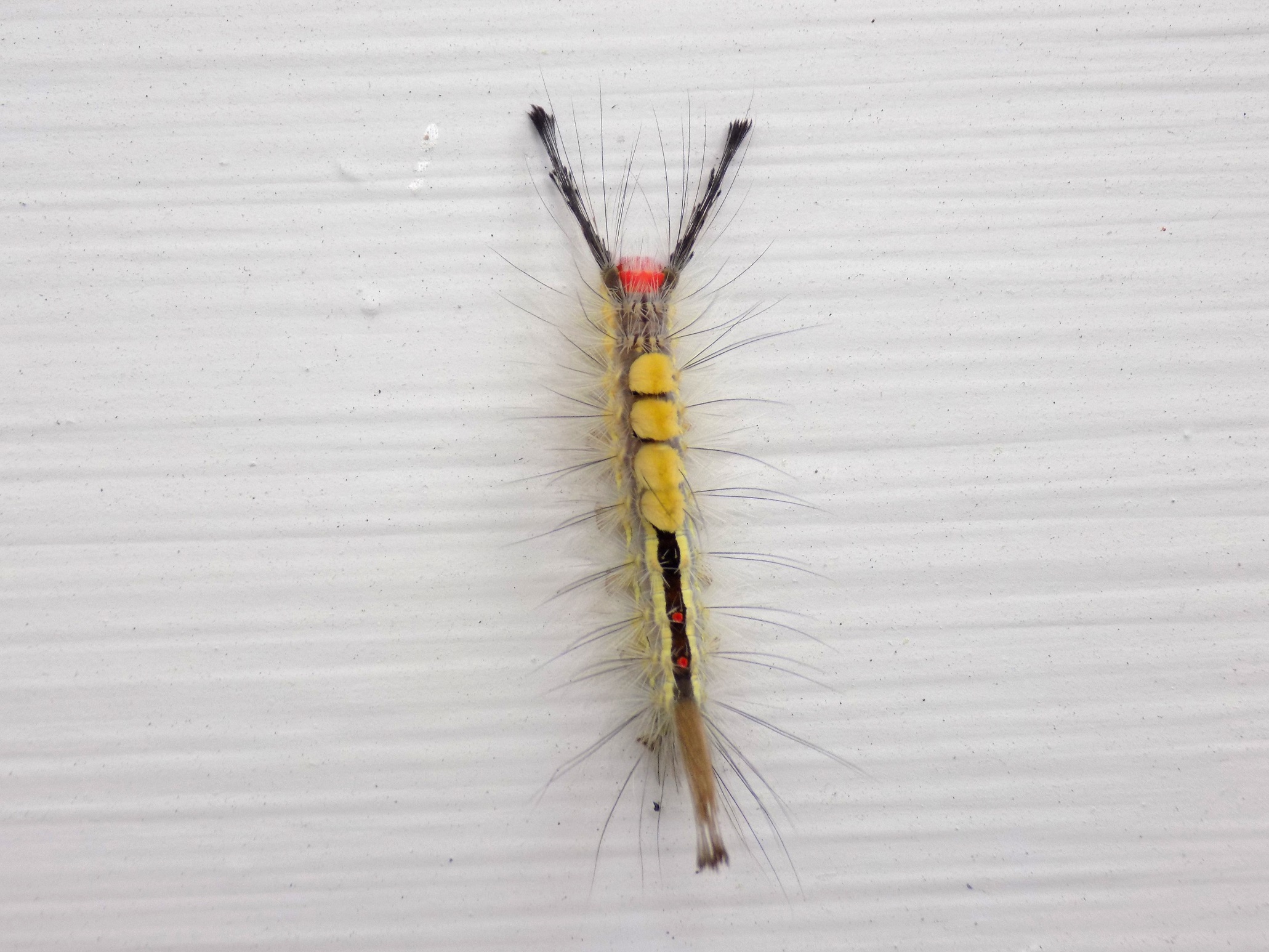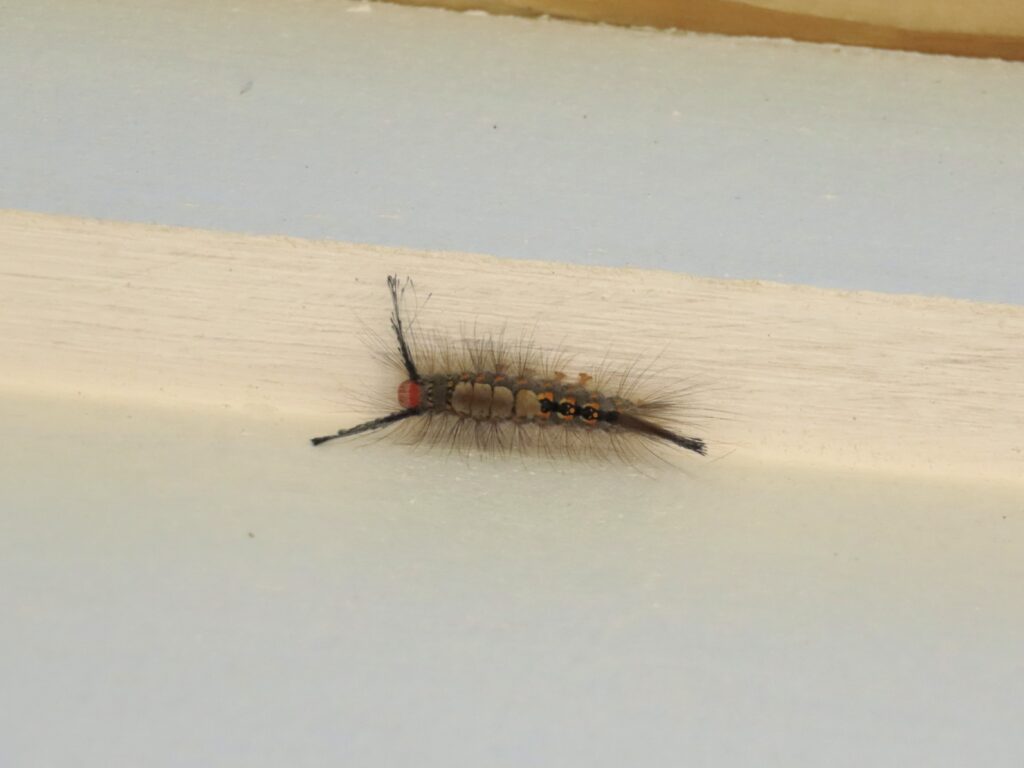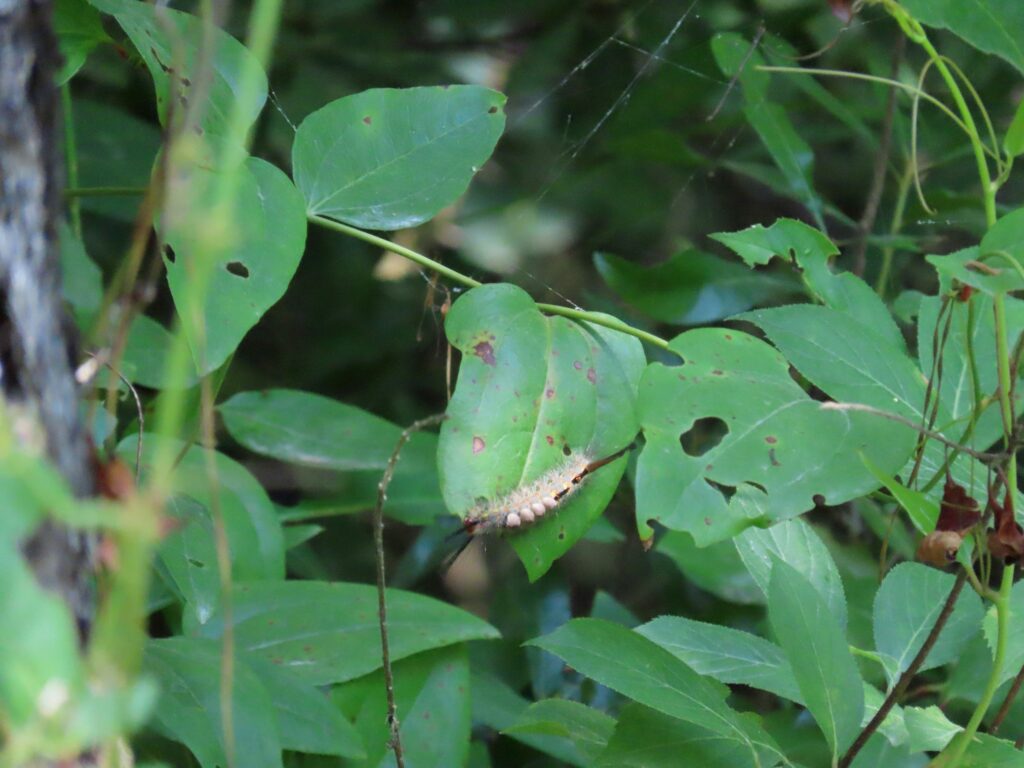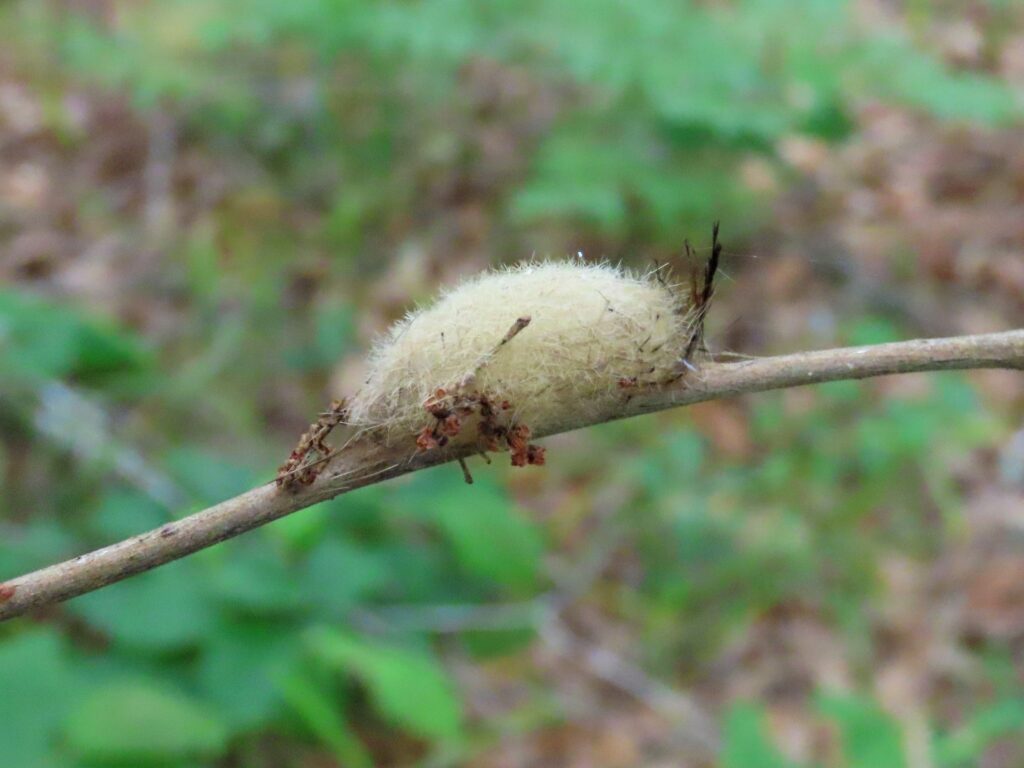




This week for Flora and Fauna Friday we have an irritating but interesting insect, the Tussock Moths (Genus Orygia).
Here in the Lowcountry we have three species of Tussock Moth: the Live Oak Tussock Moth (O. detrita), the White-marked Tussock Moth (O. leucostigma), and the Definite Tussock Moth (O. definita). Tussock Moths are most easily recognized as a caterpillar. Their larvae have a colorful head, bright orange and yellow spots and stripes, contrasting black and white markings, and are totally coated in an assemblage of various whiskers, hairs, and plumes. Their three caterpillars are very similar in appearance but easily distinguished from one another. The Definite has a yellow head, the White-marked has a set of white or yellow racing stripes down the back, and the Live Oak Tussock Moth has a red head and no white stripes.
The Live Oak Tussock Moth is definitely the most common of the bunch on Edisto Island, so it’s who I’ll focus on. Its larval host plants are principally oaks, particularly Live Oak, which is why it’s so common in the Lowcountry. The Live Oak Tussock Moth caterpillar comes in one of two color morphs, gray and yellow. The yellow is less common and is washed across its entire body with pastel yellows. The gray flavor is the prototypical morph. Its body is phosphate-gray with a thin pastel-yellow stripe on the lower flank, a line of tangerine-orange dots down the side, and a thick black stripe down the back accented with more orange spots. Their head is a vibrant scarlet and straddled by a pair of long, black, feathery whiskers. On their rear is an upward pointing black and chestnut bundle of whiskers and all along their sides is a sparse forest of stiff hairs. Yet, the most striking feature is the tussocks, four dense clumps of white or cream-colored hairs rising like a centurion’s crest from its upper back. These tussocks are not only the moth’s namesake but also the source of its infamy. Each hair in the tussock is microscopically barbed down its entire length. They’re what’s known as urticating hairs and their sole purpose is to cause irritation and itching in whatever touches the caterpillar. On top of that, each hair is attached to a tiny venom gland, which coats them in a mild venom just to make them even itchier. The “sting” of the Tussock Moth is not dangerous to humans, just highly irritating. Children are especially susceptible due to their sensitive skin along with their curiosity leading them to grab the caterpillars.
When Tussock Moth caterpillars descend from their oaken nurseries to pupate, they can become quite the nuisance. They drop to the ground and swarm out and over anything they encounter, looking for the perfect cozy crevice where they can spin a cocoon. Often your lawn furniture, siding, and eaves make the grade and they spin a cocoon there, sometimes with several caterpillars clustering together. Like most moths, their populations can fluctuate dramatically from year to year. Sometimes they’re scarce and other times they’re seemingly everywhere. Throughout this all, we mere humans can do nothing other than make way for them. Most of us, myself included, having been traumatized as curious children into a lifetime of quietly complying when these bumbling caterpillars make their yearly debut.
The tussocks play a vital role in the defensive strategy and life history of the Moth. Most obviously, they’re a defense strategy for the caterpillar. Any predator that gets a mouthful, or eye-full or nose-full, of stinging hairs quickly learns to never do that again. However, the hairs’ defensive capabilities extend beyond the caterpillar. When the caterpillar pupates, these hairs are shed and spun into the lining of its cocoon. You can often still see the caterpillar’s whiskers and hairs sticking out of the cocoon, making it look like a white dust-bunny. These hairs can retain their urticating qualities for a whole year, protecting the pupa within. However, it doesn’t stop there. The pupae metamorphose within a few weeks. The male Live Oak Tussock Moth is a small, brown, cryptically patterned moth. There’s nothing too special about him. The female on the other hand is very interesting indeed. She is not only a flightless moth but almost completely wingless! She emerges from her cocoon a ghostly white with a swollen egg-shaped abdomen. She then hangs nearby the cocoon, releasing pheromones to draw in a male. Once she’s mated, she returns to her cocoon and fills it full of eggs, coats them in a protective foam, and then rubs urticating hairs from her body into the foam. After that’s all said and done, she dies. Her eggs then lay dormant, in a very itchy cradle, until they hatch the following spring.